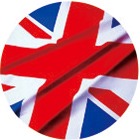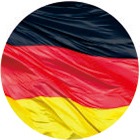
What is the UK Driving Licence?
Buy fake Europe Driver’s License and ID, A driving licence enables you to drive legally on UK roads, as well as while you’re on holiday in other countries. It takes the form of a photocard, handy for keeping in your wallet. There was previously a paper counterpart but this has now been phased out. If you previously had a paper version and are applying for an update, you’ll only get a photocard back.
Although you don’t have to carry your driving licence with you at all times – as you do in several European countries – it’s a good idea to keep it handy because it’s an easy form of identification in case you need it. If you’re stopped by the police and don’t have it to hand, you’ll usually be asked to take it to a police station within seven days.

Can you drive in the UK on a foreign licence?
If you have a non-UK driving license, you can still drive in the UK for at least a year. After this point, non-European Union or non-European Economic Area residents will have to take a UK driving test. EU and EEA licence holders are fine until the age of 70 before needing a UK licence. Rules are slightly different for those from certain Commonwealth countries and those who also drive on the same side of the road – generally, the limit is five years.
However, if you’re intending to drive a lorry or a bus, things are a little different. If you’re visiting the UK from outside the EU or EEA, you’re only allowed to drive such a vehicle if you brought it into the country.
What vehicles require a UK Driving Licence?
Nearly all vehicles require some form of driving licence, even sit-on lawnmowers. However, you won’t need one for mobility scooters, electric wheelchairs or electric bikes – although you will need to be over the age of 14 to use one. A provisional licence will allow you to drive most of these as long as you have somebody with more than three years of experience supervising you. For mopeds and motorbikes, you have to complete a CBT (compulsory basic training) course that allows you to ride by yourself for up to two years with ‘L’ plates before taking a test.
Why are there different types of Driving Licences?
Essentially, different licences allow you to drive different vehicles. Some licences overlap, allowing you to drive more than one type of vehicle. You’ll also notice that some types of driving licences have higher minimum ages than others. Some, for instance, are as young as 16, while others require you to be older before you can obtain them.
Knowing which type of licence is right for you can be confusing so we spoke to the DVLA who explained that the different categories are primarily dependent on the overall weight of the vehicle.
David Jenkins, media relations officer for the DVLA, said:
“The Road Traffic Act 1988 requires all drivers, whether private or professional, to hold a driving licence. In order to drive legally on GB roads, the driving licence must be valid and appropriate for the class or category of the vehicle the individual wishes to drive.
Those holding valid licences issued outside Great Britain may be permitted to drive here depending on the circumstances.
 UK Driving Licence categories
UK Driving Licence categories
Category Age Description
AM 16 Mopeds and Quadricycles up to 45mph
A1 17 Mopeds up to 125cc and 11kW (14.75hp)
A2 19 Motorbikes up to 35kW (46.9hp)
A 24 Any Motorbike
B 17* Any car (automatic-only licences are also available)
B (minibus) 21 Minibuses – only valid in UK and not for hire or profit
C1 18 Medium-sized vehicles (e.g. large vans)
C 21 Large-sized vehicles (e.g. non-articulated lorries)
C+E 21 Large-sized vehicles with a trailer (e.g. articulated lorries)
D1 21 Minibuses
D 24 Buses
F 17/18/21 Tractors (dependant on width)
G 21 Road rollers
H 21 Tracked vehicles (e.g. tanks)
K 16 Mowing machines or other pedestrian-controlled vehicle
















